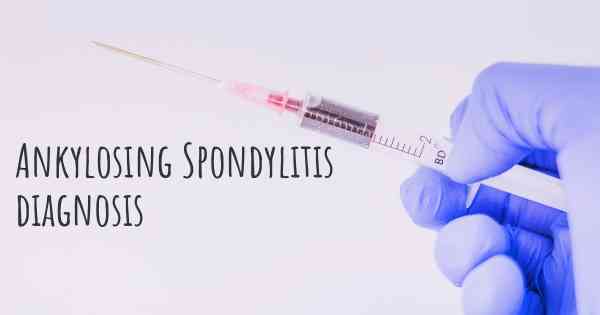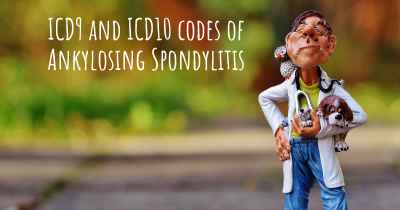How is Ankylosing Spondylitis diagnosed?
See how Ankylosing Spondylitis is diagnosed. Which specialists are essential to meet, what tests are needed and other useful information for the diagnosis of Ankylosing Spondylitis

How is Ankylosing Spondylitis Diagnosed?
Ankylosing Spondylitis (AS) is a chronic inflammatory disease that primarily affects the spine, causing pain, stiffness, and eventually leading to fusion of the vertebrae. Early diagnosis and treatment are crucial to managing the symptoms and preventing long-term complications. Diagnosing AS involves a combination of medical history, physical examination, imaging tests, and laboratory tests.
Medical History
The first step in diagnosing AS is a detailed medical history. The doctor will ask about your symptoms, their duration, and any family history of AS or other autoimmune diseases. It is important to provide accurate information about your symptoms, including the location and intensity of pain, morning stiffness, and any other associated symptoms.
Physical Examination
During the physical examination, the doctor will assess your range of motion, flexibility, and any signs of inflammation. They may check for tenderness and swelling in the joints, especially in the spine and sacroiliac joints. The doctor may also evaluate your posture and look for any signs of spinal deformity or limited mobility.
Imaging Tests
Imaging tests play a crucial role in diagnosing AS. The most commonly used imaging techniques include:
- X-rays: X-rays can reveal changes in the spine and sacroiliac joints, such as fusion, erosion, and new bone formation. However, these changes may take time to develop, so early-stage AS may not be visible on X-rays.
- Magnetic Resonance Imaging (MRI): MRI uses powerful magnets and radio waves to create detailed images of the spine and other affected areas. It can detect inflammation and early structural damage even before it appears on X-rays, making it a valuable tool for early diagnosis.
- Computed Tomography (CT) Scan: CT scans provide detailed cross-sectional images of the spine and can help identify bony changes, especially in the later stages of AS.
Laboratory Tests
Laboratory tests are not definitive for diagnosing AS, but they can help support the diagnosis and rule out other conditions. The most commonly ordered tests include:
- Blood Tests: Blood tests can measure certain markers of inflammation, such as C-reactive protein (CRP) and erythrocyte sedimentation rate (ESR). Elevated levels of these markers may indicate ongoing inflammation in the body.
- Genetic Testing: A specific genetic marker called HLA-B27 is present in the majority of individuals with AS. However, having HLA-B27 does not necessarily mean you have AS, as it can also be found in other conditions.
Consultation with a Rheumatologist
AS is a complex condition that requires specialized knowledge for accurate diagnosis and management. If your primary care physician suspects AS based on your medical history, physical examination, and initial tests, they may refer you to a rheumatologist. Rheumatologists are doctors who specialize in diagnosing and treating autoimmune and inflammatory diseases, including AS. They will further evaluate your symptoms, review the test results, and make a definitive diagnosis.
Monitoring and Follow-up
Once diagnosed with AS, regular monitoring and follow-up with a rheumatologist are essential. AS is a chronic condition that requires ongoing management to control symptoms, prevent complications, and maintain a good quality of life. Your rheumatologist will develop a personalized treatment plan based on the severity of your symptoms, disease progression, and your overall health.
In conclusion, diagnosing Ankylosing Spondylitis involves a comprehensive approach that includes medical history, physical examination, imaging tests, and laboratory tests. Early diagnosis is crucial for timely intervention and effective management of the disease. If you suspect you may have AS, it is important to consult with a healthcare professional for a proper evaluation and diagnosis.
Posted Mar 4, 2017 by Denise 450
Symptoms
Early signs and symptoms of ankylosing spondylitis might include pain and stiffness in your lower back and hips, especially in the morning and after periods of inactivity. Neck pain and fatigue also are common. Over time, symptoms might worsen, improve or stop at irregular intervals.
The areas most commonly affected are:
The joint between the base of your spine and your pelvis (sacroiliac)
The vertebrae in your lower back
The places where your tendons and ligaments attach to bones (entheses), mainly in your spine, but sometimes along the back of your heel
The cartilage between your breastbone and ribs
Your hip and shoulder joints
When to see a doctor
Seek medical attention if you have low back or buttock pain that came on slowly, is worse in the morning or awakens you from your sleep in the second half of the night — particularly if this pain improves with exercise and worsens with rest. See an eye specialist (ophthalmologist) immediately if you develop a painful red eye, severe light sensitivity or blurred vision.
A rheumatologist is commonly the type of physician who will diagnose ankylosing spondylitis (AS), since they are doctors who are specially trained in diagnosing and treating disorders that affect the joints, muscles, tendons, ligaments, connective tissue, and bones.
Posted Mar 4, 2017 by kat1 1050
Posted Mar 5, 2017 by Heather 1120
Posted May 17, 2017 by Shannon 1050
Posted May 17, 2017 by Keli 1050
Posted May 18, 2017 by Karlie 1150
Posted May 18, 2017 by kelly cannell 500
Posted May 19, 2017 by Kylie Frost 2120
Posted May 19, 2017 by Tamra 1750
Posted Aug 31, 2017 by BigStu111 12832
Posted Sep 6, 2017 by Daniel Wilson 2010
Posted Sep 7, 2017 by Luciano Scariano 2600
MRI
X-rays
Medical check
Medical performance tests
Posted Sep 7, 2017 by Carol 600
Posted Sep 10, 2017 by Sal 4050
Posted Sep 21, 2017 by Rana Navid Anwaar Khan 3945
RISONANAZA magnetica
Raggi x
Ves
Pcr
Protidogramma
Posted Oct 1, 2017 by Silvia 2500
Unfortunately, depending on so many factors as the health system of the country, doctors, patients, access to investigation and many other reason can lead to years of misdiagnose.
Doctors working with specialists as Rhumatologist are necessary.
Usually an X-Ray will be needed, but sadly only once the damaged are irreversible this way could help for diagnose, this is why in nowadays MRI are much more efficient to help early diagnose as they can help see inflammation at an early stage before bone ossification.
Also one of the criteria that can help is the test of the gene HLA-B27. If positive that can reinforce the supposition of the illness but it should by no means exclude the illness! As it is known by now that more than 100 genes can be related to AS and that many patients who have AS don't have HLA-B27.
But a few questions like:
did the pain last more than 3 months?
did it started before 45 years old?
did the pain get better or worse with exercice?
did the pain wakes up during the night?
did the pain came gradually over time?
Can already help to understand if the patient might be suffering from an inflammatory condition and help to actually take the right step towards the right direction for a diagnose.
Posted Feb 16, 2018 by Laeti 3570
Posted May 31, 2018 by Colleen 2550
Posted Aug 10, 2017 by Andressa 1050
Posted Aug 14, 2017 by Luz 901
Posted Aug 15, 2017 by Adriana 1000








